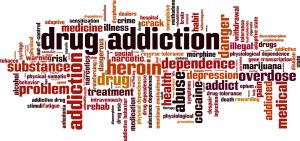
Deer are fascinating creatures, and understanding their anatomy can provide valuable insights for hunters, wildlife enthusiasts, and researchers alike. This comprehensive guide will explore the key aspects of deer anatomy, offering useful tools and resources to enhance your understanding.

The Skeletal System
The skeletal system of a deer provides the necessary structure and support for its body. Deer have a lightweight yet sturdy skeleton, which enables them to run at high speeds and leap great distances. Their bones are adapted for endurance and agility, making them well-suited for their environment.
Essential Tools for Studying Deer Skeletons
- Anatomy Models:
- Deer Skeleton Model: A detailed model that offers a hands-on approach to learning about deer skeletal structure. Available on Amazon, this model is perfect for educational purposes.
- 3D Deer Anatomy Poster: A visual aid that provides a comprehensive overview of the deer skeletal system.
- Books and Guides:
- “Deer Anatomy for Beginners”: A book that breaks down the complex skeletal system into understandable sections.
- “Field Guide to Deer Anatomy”: This guide is ideal for hunters and wildlife enthusiasts who want to study deer anatomy in the field.
The Muscular System
The muscular system of a deer is intricately designed to support its movement and agility. Deer have powerful muscles, particularly in their legs and hindquarters, which allow them to sprint and jump with ease. Understanding the muscular system can be particularly useful for hunters aiming to make clean and humane shots.
Essential Tools for Studying Deer Muscles
- Anatomy Models:
- Muscular System Model: This model highlights the major muscle groups of the deer, providing a detailed view of their function and placement.
- Muscle Diagram Poster: Available on Amazon, this poster is a great visual aid for understanding the muscular system.
- Books and Guides:
- “The Muscular Anatomy of Deer”: A detailed book that explores the muscular system, ideal for both beginners and advanced learners.
- “Deer Muscles: A Hunter’s Guide”: This guide offers practical insights into the major muscle groups, helping hunters to target the right areas.
The Digestive System
Deer have a unique digestive system that allows them to process a variety of plant materials efficiently. Their four-chambered stomach is adapted for fermenting tough vegetation, breaking it down into digestible nutrients. Understanding this system can help wildlife enthusiasts and researchers ensure the health and well-being of deer populations.
Essential Tools for Studying Deer Digestion
- Anatomy Models:
- Digestive System Model: This model provides a detailed look at the deer’s stomach and intestines, available on Amazon.
- Digestive Anatomy Poster: A visual aid that outlines the various parts of the digestive system.
- Books and Guides:
- “The Deer Digestive System”: A comprehensive book that covers each part of the digestive system in detail.
- “Understanding Ruminant Digestion”: This guide offers insights into how deer and other ruminants process their food.
The Respiratory System
The respiratory system of a deer is adapted for high efficiency, enabling them to take in large amounts of oxygen to sustain their active lifestyle. Deer have large lungs and a highly vascularized nasal cavity, which allows for effective oxygen exchange.
Essential Tools for Studying Deer Respiration
- Anatomy Models:
- Respiratory System Model: A detailed model that highlights the key components of the deer respiratory system.
- Respiratory Anatomy Poster: Available on Amazon, this poster is a great visual tool for studying deer respiration.
- Books and Guides:
- “The Respiratory Anatomy of Deer”: A book that provides a thorough examination of the respiratory system.
- “Breathing in the Wild”: This guide offers practical insights into how deer breathe and how their respiratory system supports their lifestyle.
The Reproductive System
Understanding the reproductive system of deer is crucial for wildlife management and conservation efforts. Deer have a unique breeding cycle, and knowledge of their reproductive anatomy can help in monitoring population health and growth.
Essential Tools for Studying Deer Reproduction
- Anatomy Models:
- Reproductive System Model: This model provides a clear view of the reproductive organs of deer, essential for educational purposes.
- Reproductive Anatomy Poster: A visual aid available on Amazon, perfect for detailed study.
- Books and Guides:
- “Deer Reproductive Anatomy”: A comprehensive book that explores the reproductive system of deer in detail.
- “Breeding and Reproduction in Deer”: This guide offers practical information for wildlife managers and researchers.
By using these tools and resources, you can gain a deeper understanding of deer anatomy, enhancing your knowledge and appreciation of these magnificent animals. Whether you are a hunter, wildlife enthusiast, or researcher, these insights and Amazon products will provide valuable support in your study of deer anatomy.






